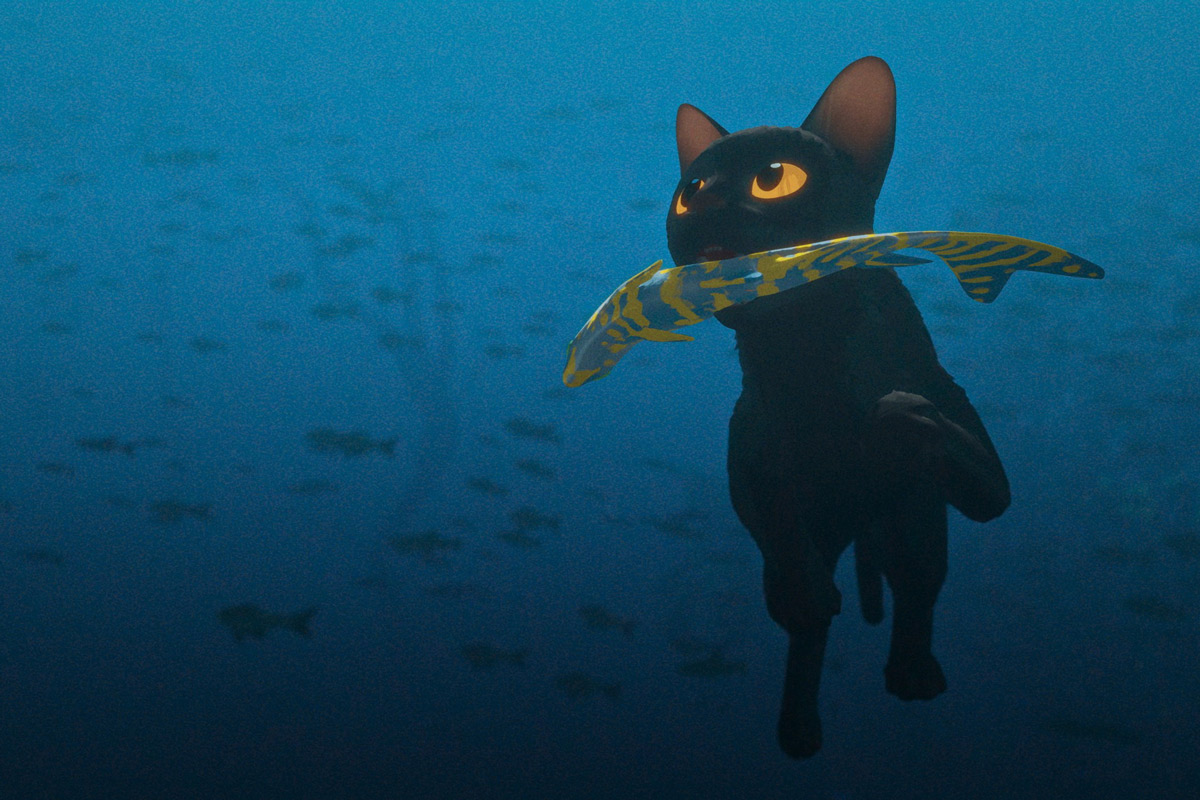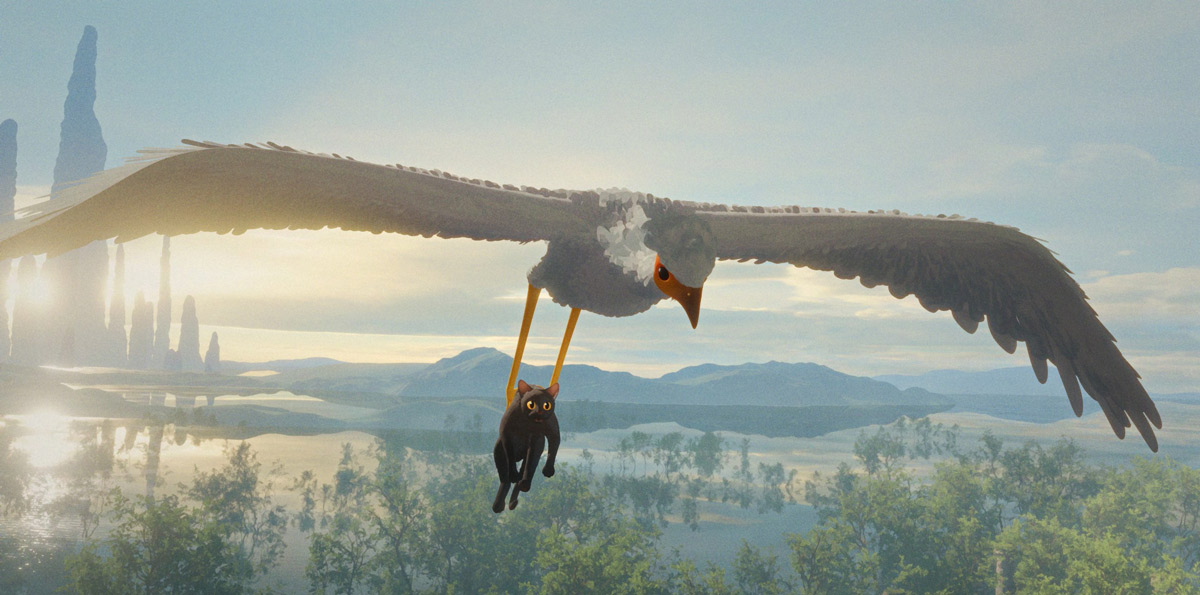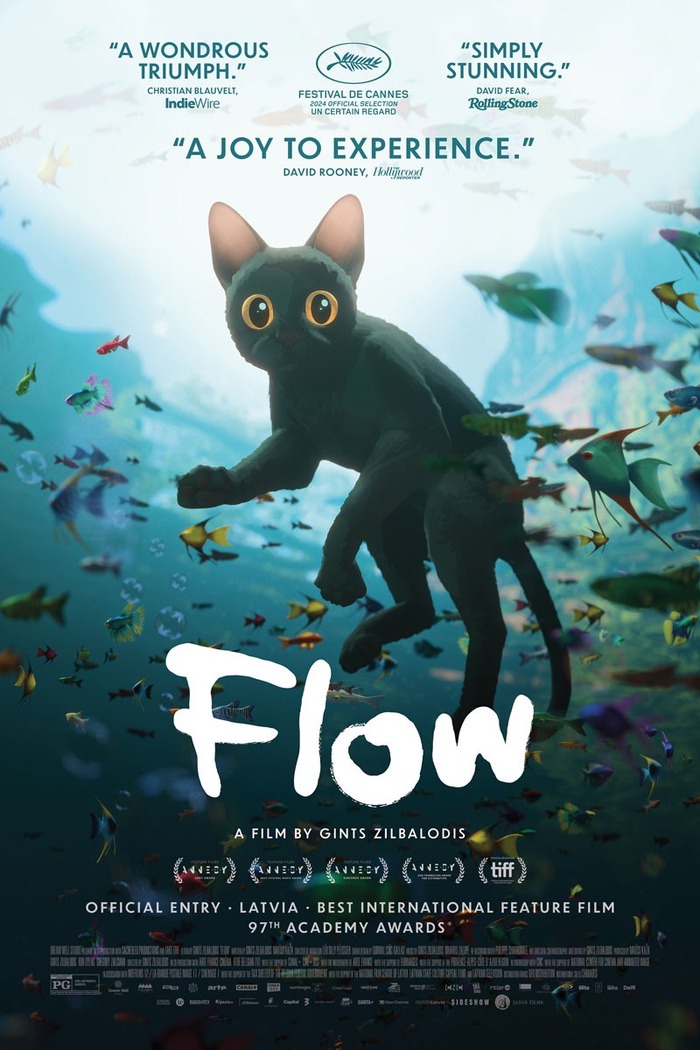This year’s Best Animated Feature Oscar winner does not contain any dialogue at all — and yet, is immersive and captivating.
Everyone loves an underdog story. And a great underdog story unfolded at the 97th Academy Awards: Flow, a small independent Latvian film, won the Best Animated Feature Oscar over movies from established Hollywood studios Pixar and Dreamworks Animation.
At the centre of this underdog story is a cat (but yes, there are dogs in it, too!).
In a post-apocalyptic landscape devoid of humans, a dark grey house cat navigates the flooded world in a bid for survival. Along the way, it befriends an enthusiastic yellow Labrador, a phlegmatic capybara, a lemur who has amassed a collection of knick-knacks, and an enigmatic secretary bird. The motley crew floats through a sunken city on a small rowboat as the animals bond and come to care for each other.

Major animated films aimed at kids can often be frenetic — but not Flow. Told entirely without dialogue and veering away from a traditional plot structure, Flow is a largely calm, lyrical movie. The movie appeals to children because of its cute characters and to adults because of its contemplative, poetic nature.
Flow catapulted director Gints Zilbalodis to overnight success and acclaim, granting him hometown hero status in Riga, but the self-taught animator has been honing his craft for a long time. At 17, Zilbalodis made a 7.5-minute short film called Aqua, about a cat struggling to survive in a watery world. This formed the basis of what would eventually become Flow.

Zilbalodis made his feature directorial debut with Away in 2019, a movie he wrote, directed, produced, edited, and scored himself. He founded the studio Dream Well to make Flow, which he co-wrote with fellow Latvian filmmaker Matīss Kaža, who also serves as producer. The crew of 40-50 people is tiny for an animated feature but large compared to Zilbalodis’ earlier one-man efforts.
“I guess it was intentional to come up with a story that reflected my own experience of working with a group for the first time and facing your fears,” Zilbalodis tells Animation Magazine. “[Just like how] the cat in the movie is also somewhat afraid of other animals.”
Flow is an ambitious feat, with an entirely different workflow from big studio animated films. It is created primarily with the free 3D modelling software Blender, using its built-in rendering engine EEVEE. “We have a lot of animals, we have a lot of water, which in animation is one of the hardest things to do, so we did have people who are much better at everything than me,” Zilbalodis says.

Zilbalodis’ approach to Flow is naturalism rather than realism. There is an authenticity to the animal behaviour in the movie, heightened by the fact that they do not speak, but there is still a degree of stylisation that helps evoke a dreamy, magical mood. “We are studying real life; everything is really animated by hand, so it’s all these artists who studied animals and interpreted their movement,” Zilbalodis says. Any cat owner will recognise the protagonist’s mannerisms, like how its ears flatten out when it is frightened.
Past the movie’s visuals, its sound design creates an immersive world, bringing its animal characters to life. Most movies, animated or live-action, use voice actors to create animal sound effects. Flow uses real animal sounds but takes some artistic liberties — the capybara is voiced by a camel because real capybaras do not make a lot of noise, and Zilbalodis felt their high-pitched chirps were jarring when compared to their calm temperament.

Does the movie work with animal sounds in lieu of dialogue? “Journalists often ask me, ‘Is it difficult to make a film with no dialogue?’ It is difficult, but I think it’s actually tougher to tell stories with dialogue,” Zilbalodis says in an interview with Empire, adding that he tends to think of the visuals first because it comes more naturally to him. “Without characters speaking, I can be more expressive with all the other tools of cinema. I’m forced to come up with an original way of telling the story. I can’t just have them speak about it.”
An alluring cinematic experience, Flow uses the environment, camera movements, music, and sound to draw audiences into its world. Its magical realism belies a deeply human tale about community and found family, and its triumphant behind-the-scenes story is inspiring to young aspiring animators around the world.
Images: © 2025 Sideshow & Janus Films
‘Flow’: A Modern-Day Silent Film Masterpiece
Underdog Triumph: Flow, a Latvian indie animated film with no dialogue, won the Best Animated Feature Oscar, beating movies from major studios like Pixar and DreamWorks.
Poetic Storytelling: Set in a post-apocalyptic world, the film follows a house cat and its animal companions on a quiet, reflective — if hazardous — journey, appealing to both children and adults.
Unique Production: Created using free software (Blender) by self-taught animator Gints Zilbalodis and a small team, the film stands out for its handcrafted animation and stylized naturalism.
Immersive Without Words: Real animal sounds and expressive visuals replace dialogue, enhancing emotional storytelling through movement, sound design, and camera work.
Art Reflecting Life: The film’s themes of trust and connection mirror Zilbalodis’ own growth from solo creator to collaborative filmmaker.

